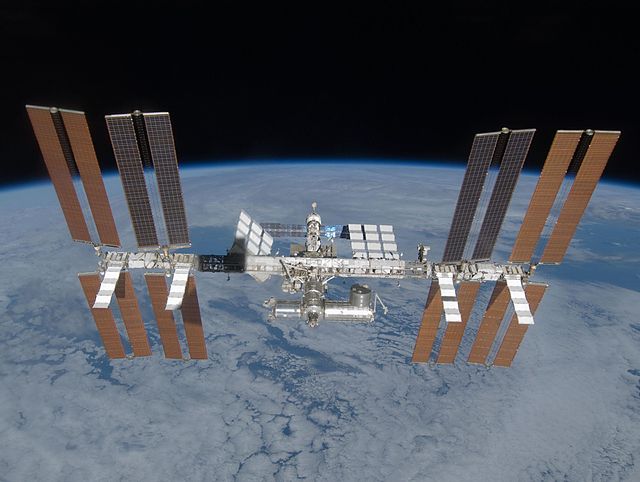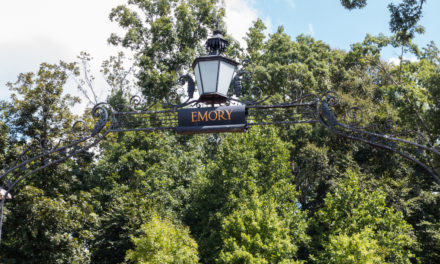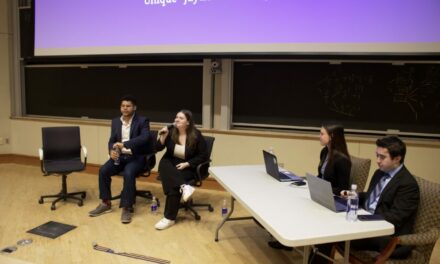Researchers at Emory University School of Medicine and Children’s Healthcare of Atlanta are working with NASA to experiment with cardiac cells on the International Space Station. The research strives to test whether microgravity, or the condition in which people or objects appear to be weightless, speeds up the growth of heart cells to generate better cells for heart disease research.
The research study was led by Chunhui Xu, a professor in the department of pediatrics at the medical school and director of a cardiomyocyte stem cell laboratory, and Kevin Maher, a professor of pediatrics at the medical school and director of the Cardiac Intensive Care Unit at Children’s Healthcare of Atlanta.
NASA astronauts conducted the experiment while aboard the SpaceX-20 mission in March 2020. While aboard the mission, stem cells became beating cardiac cells, proving their theory correct.
Xu hopes to expand her research by investigating the molecular targets of microgravity that regulate the growth of heart stem cells. Through the space experiment, Xu wants to develop new technologies for heart disease treatments that promote the use of stem cell-derived muscle cells.

Emory University School of Medicine researchers experimented with cardiac cells on the International Space Station. Courtesy of Wikimedia Commons
Although damaged heart muscle cells cannot regenerate, stem cell-derived muscle cells can potentially replace damaged cells in heart disease patients. The International Space Station National Laboratory allowed Xu and her team to test her hypothesis in a real space environment.
“During the study, we developed new technologies including cryopreservation of 3D cardiac microtissues which could be used in future space experiments in the broader area,” Xu wrote in an email to the Wheel. “We were able to collaborate with experts in space experiments from our implementation partner and the Center for the Advancement of Science in Space.”
Prior to launching stem cells to the space station, Xu and Mader utilized space-simulation machines to promote the transformation of pluripotent, or immature, stem cells to cardiac muscle cells. Microgravity was a key point of research as previous studies suggest that microgravity increases the efficiency of stem cell culture production. The growth rate of stem cells is faster under microgravity conditions, altering the physiological functions such as regeneration.
Xu stated that increasing the growth rate of heart cells pushes the cells into maturity so they behave more like adult cells. Reaching heart cell maturity is an essential part of heart disease research — by increasing the rate of growth of heart cells, scientists can observe the harmful effects of aging, such as decreased regenerative capacity and increased cellular death.
Gravity affects the molecule production in cells, such as by increasing or decreasing the amount of proteins made or how they are produced, according to Xu. The structural changes affect the cell properties, like muscle cell growth.
“In our ground-based study, we have used the random position machine to study how simulated microgravity affects the ability of heart stem cells to turn into cardiac muscle cells,” Xu wrote. “Under simulated microgravity, the heart stem cells produce a lot more beating heart cells than when the stem cells are grown in standard gravity.”
The random positioning machine creates a simulated microgravity environment by spinning the biological samples at random speeds and directions. Xu said that the continuous movement of the gravity vector causes the vector to average to zero. While the random positioning machine is an effective resource, this device only provides an approximation to a microgravity environment since gravitational forces are still acting under simulated microgravity.
Physics Lecturer Alissa Bans highlighted that the intersectionality of medicine and astronomy is a critical field of study. Through observing how the extreme environment of space affects the human body, scientists can not only learn more about creating a safer environment for astronauts but also apply their findings to Earth, Bans wrote in an email to the Wheel.
“We can learn new things about the body by seeing how it adapts and reacts to different conditions … and nothing is quite so different than the conditions of space,” Bans wrote.
Science & Research Desk | Julia Laszcz (she/her 24C) is from Bergen County, New Jersey, majoring in neuroscience and behavioral biology and English. Outside of the Wheel, Laszcz is a writer for Grey Matters. Laszcz also is a volunteer for her town’s ambulance corp. She likes to cook new recipes and play with her dog.




